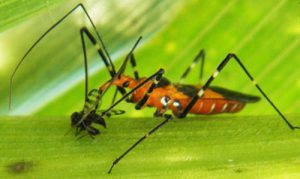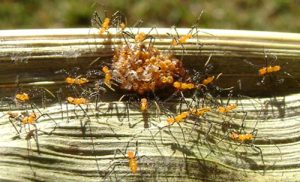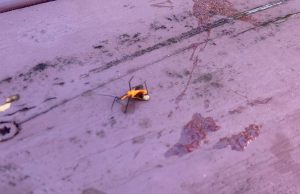
With a name like “assassin bug,” the tiny creature sounds like it could be the next star of a Marvel action movie. Leggy and intimidating, with black highlights and bright orange warning coloration, it could totally work as a comic book hero. The one I see the most often around here is the longlegged or milkweed assassin bug, (Zelus longipes) named for its similarity in appearance to the (unrelated) milkweed bug.

In the real world, assassin bugs are heroes to the vegetable gardener. Nearly everything eats a juicy tomato, pepper, or leafy green veggie, but the assassin bug leaves the plants alone. As suggested by its name, the assassin bug is a killer—a top predator among insects. An assassin bug does not go easy on its prey; typically beetles, flies, tomato hornworms, and even roaches and mosquitoes. Once the prey is ambushed, the bug uses its rostrum to “impale them, inject venom, and suck the body contents.” Like I said, total comic book fodder.

While considered a beneficial species that protects the food we’ve worked so hard to grow, don’t assume the assassin bug is particularly friendly. It does not deliberately attack humans, but will defend itself if threatened. The bite of an assassin bug is said to be quite painful, and will result in a small itchy lump. There are no toxins present, though, and the bite will resolve itself fairly quickly.
So, if you see one of these fascinating little creatures crawling in your garden, leave it be. It is no doubt doing its job, hunting down pest insects one by one and slurping their guts out.
 7
7
